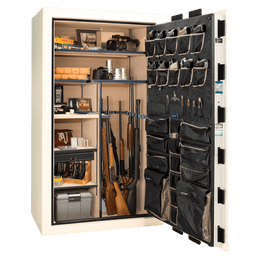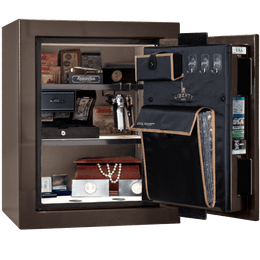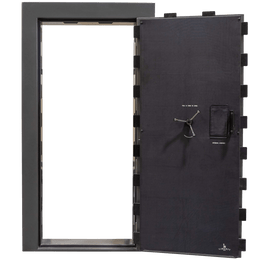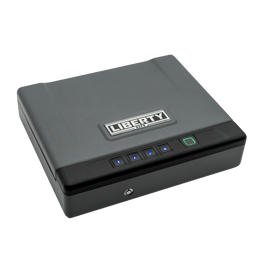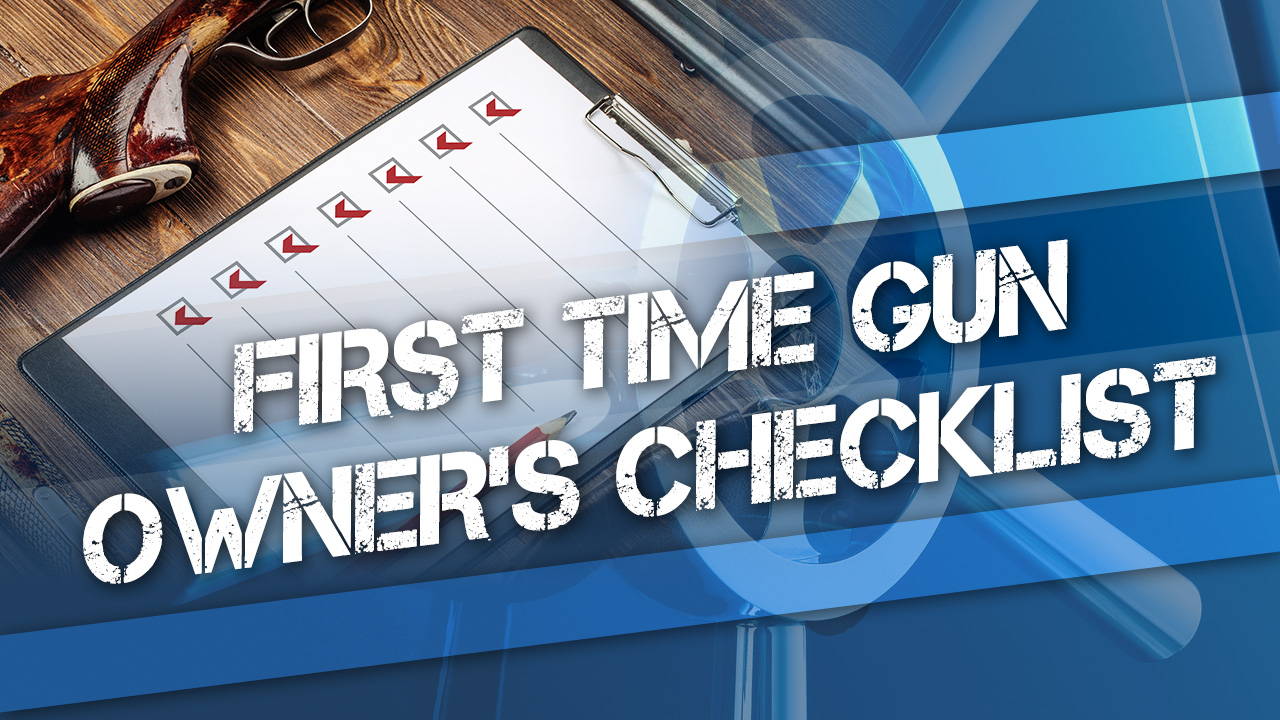Buying your first gun is exciting and scary, but don’t worry; we’re here to help. If you’re a first-time gun owner we’re going to give you a checklist of must-have items you need for proper, safe firearm use and secure storage, some recommended or should-have checklist items, as well as some nice-to-have gear that makes life a lot easier at the range and home.
Note: This article is intended for new gun owners who have or will soon purchase their first firearm. see our other articles if you’re looking for information on what you need to buy a gun or dos and don’ts for new shooters.
New gun owner checklist: Absolute must haves
Even if you don’t plan on shooting your gun often at all, these are things you still absolutely need to have. This part of the checklist is the bare minimum, so make sure you have these items covered as soon as possible.
See the should have and nice to have checklist recommendations further down the article for more things that make gun ownership and use easier.
Legal documentation or firearms permits (where required)
First, you must have any permits or documentation needed in your jurisdiction for the legal possession and ownership of your firearm. Suppose you purchased your gun through a local dealer. In that case, chances are very good that they did it correctly, and you'll already have any necessary purchase permits or firearm licenses before you take possession of your gun.
However, if you were given a firearm by a family member or friend (which is usually permitted in most jurisdictions, as long as you follow federal and local laws) or if you bought your gun from a private legal seller, you may still need to get your paperwork in order depending on where you live. In most states, non-prohibited persons (non-felons, in simple terms) of legal age can purchase firearms from private sellers without any paperwork. However, some states still require you to notify local authorities or apply for a purchase or possession permit. In some areas, you may need a law enforcement permit to legally have a firearm in your home. So check your local laws carefully. An excellent place to ask is a local gun shop or online forum familiar with your state's laws (and sometimes cities have their particular regulations). Be sure to comply with all laws and regulations. It is your responsibility to learn and follow your local laws.
Read your owner’s manual (and/or gain correct knowledge of how to operate your firearm safely)
Another must-have for any firearm owner is obtaining, reading, and understanding the owner’s manual for your firearm. If you bought a new firearm from a gun store or online dealer, it will come with the factory packaging and the owner’s manual. If you got a gun second-hand or used from a dealer, it will most likely not come with an owner’s manual. However, every reputable manufacturer will provide an owner’s manual free of charge upon request. Many have them available online as well.
It’s extremely important to familiarize yourself with your specific firearm's features, controls, and functions. Even if you think you know how it works, or if you used to have guns decades ago and are just getting back into it, it’s vital that you read up on your firearm model. New safety features, multi-function controls, and specific disassembly and reassembly procedures may be unique to your new gun. Obtain, and actually read, your owner’s manual and learn how to operate your firearm safely.
If you’ve purchased a gun and don’t know how it works, don't use it or handle it much, especially don’t load it, until you obtain the manual and proper instruction to learn how. A gun you don’t know how to operate is potentially more dangerous to you and your family than it is to an attacker. Especially important is to learn and practice the four rules of gun safety. We’ve all heard stories of accidental shootings where the gun just went off, or the person didn’t know it was loaded. In 100% of these cases, proper knowledge of safe gun handling would have prevented these tragedies. There are many different ways to describe the four basic gun safety rules, but in general:
- Treat all guns as if they’re loaded unless you personally, immediately, and visually verify otherwise. Another way to put this is all guns are always loaded.
- Never allow the muzzle/barrel of any gun to point at anything you are not willing to shoot and destroy. This includes the shooter's legs, feet, hands, other people, etc.
- Keep your finger off the trigger and outside the trigger guard until your sights are on the target and you are ready to shoot.
- Be sure of your target and what is behind it. For example, don’t shoot at a target on the crest of a hill, as you have no idea where that bullet will go.
If you’re handling your unloaded gun at home, practice good trigger discipline and muzzle awareness. Never point your gun at yourself, your pets, or anyone else that isn’t trying to harm you.
Video: Four Rules of Firearms Safety
A method for secure firearm storage
Every gun owner needs a method for properly securing a firearm when it’s not in use. In some jurisdictions, you may be held partially responsible even if your gun is stolen from your home and used in a crime. Some locales require certain levels of secure firearm storage, such as trigger or cable locks, a gun safe, or a handgun vault.
If possible, we strongly recommend you purchase a sturdy handgun vault at a minimum (if you bought a handgun) rather than using trigger locks or cable locks, which can be easily defeated. Gun cabinets can sometimes be appropriate, but a dedicated, fire-resistant, security-rated gun safe is a much better choice if you can swing it. If a cable-type firearm lock is all you can afford right now, get the best one and ensure you use it properly to secure your gun when it’s not in use.
First-time firearm owner checklist continued: Should have or recommended items
Now that we’ve covered the bare minimum, must-have items on our checklist, let’s go over some things that every new gun owner should have, or that are strongly recommended.
Gun cleaning kit, cleaning patches, and gun oil or another suitable lubricant
This really should be a must-have but it’s not strictly required for safe firearms ownership, particularly if you don’t plan to use your gun. If you do plan to actually shoot your gun (and you should), it’s a good idea to practice at the range at least once a month to keep your skills fresh, and this means you’ll need a good gun cleaning kit including gun oil. Your manual will tell you where and how much lubricant to apply, but remember, guns are machines, and machines require proper lubrication to function. Keeping your defensive firearm clean and properly lubricated is an absolute must.
Even if all you have is some light 3-in-1 machine oil or some leftover motor oil, that will be sufficient to keep your firearm running reliably in nearly all cases. Cleaning patches can be cut from old cotton t-shirts if needed. Read our tutorial on how to safely clean your gun. Multiple sources offer quality, inexpensive gun cleaning kits, including Outers, Hoppe’s, Otis, and Tipton. If your cleaning kit didn’t come with cleaning solvent or oil and you aren’t sure what to get, a good CLP (cleaner, lubricant, protectant) will probably be sufficient. Any gun shop will have the supplies you need.
Eye and ear protection
This category belongs on the must-have checklist, but it’s not strictly required for safe firearm ownership and operation. However, you'll regret it in short order if you go to the range and forget your earplugs or shooting muffs (and good shooting glasses). Guns are loud, particularly indoors, and can cause permanent hearing damage after just one shot. Cheap foam earplugs work well when used correctly (read and follow the directions; about 90% of people don’t use them properly in our experience). However, electronic earmuffs that allow you to hear normal conversations while protecting your hearing against loud noises are one of the best investments you can make, and you don’t have to spend a lot to get them. Howard Leight Impact Sport electronic muffs are one of our top recommendations for new shooters, and they regularly go on sale for around $30.
Some people may elect to forego shooting glasses when hunting or shooting outdoors, but we always recommend them. Firearms can spray hot gases, metal particles, and flecks of burning gunpowder back into the shooter’s face if something is not quite right with the ammunition, a primer is pierced, a case ruptures, or if a revolver’s cylinder is not perfectly aligned with the forcing cone. Semi-autos can also throw sharp, hot brass back into your face occasionally. Eye protection is a very good idea. If you’re shooting steel targets at the range, eye protection is absolutely mandatory, and most gun ranges won’t let you shoot without eye protection.
A sufficient supply of quality ammunition
If you bought a hunting rifle and only plan to shoot 3-5 shots per year, having a couple of boxes of your favorite hunting ammunition may be sufficient for your needs. On the other hand, if you bought a sporting clays shotgun and plan to shoot one or two weekends a month, you’ll probably want to start buying your shotgun ammo by the flat or perhaps invest in a shotgun reloading press.
If you’re a new handgun owner, it’s a very good idea to practice shooting your gun at the range at least once a month to gain and maintain good shooting skills, and you might shoot 50-100 rounds or more each time you visit the range. If your range has a regular supply of practice ammo at a reasonable price on hand, fine, but if not, you’ll want to start buying ammo in bulk, probably 500 or 1000 rounds at a time, and make sure you purchase enough to rotate through your defensive/carry ammo regularly to keep it fresh and reliable. Check your local gun shops to see if they can get you what you need. There are also several well-reputed online ammo shops such as SG Ammo or Lucky Gunner, but of course, make sure your local laws allow purchasing ammunition via the internet. Some states don’t permit this and you’ll have to buy your ammunition locally, perhaps even after you pay a fee or get an ammo purchase permit if your location is really stringent.
Note: Check your owner’s manual and ensure you purchase and use the right caliber and type of ammunition that meets the manufacturer's specifications. In the case of defensive ammunition, shoot enough of it to confirm reliable function before trusting your life to it.
Professional instruction/firearms training
This may be required for some permits (such as Concealed Carry Weapons/CCW permits) or firearm ownership in your locale, but even if it’s not required, it’s a very good idea to seek out professional, hands-on firearms training if you’re a new gun owner. A good instructor will help you feel comfortable loading, unloading, disassembling, assembling, and shooting your new gun and can observe and correct potentially dangerous habits before they become a problem.
There are classes for hunting, sport shooting, competition, and concealed carry/defensive firearm use, so check out what classes are available near you. See our complete article on tips for new shooters for some handy advice, but we recommend seeking hands-on, professional instruction if possible.
Holster and sturdy belt (for concealed carry or competition handguns)
If you bought a handgun for personal protection/concealed carry, you’ll need to get a good holster, and it’s a good idea to get a dedicated gun belt that resists twisting. Shoving a handgun into a dusty pocket or a purse is asking for trouble. A good holster will help protect the gun as well as help prevent anything from interacting with the trigger while your gun is in its holster.
Check out our article on the best concealed carry holsters for an overview of the available types and models.
Tactical or weapon-mounted light for defensive firearms
A flashlight mounted to your defensive handgun, home-defense shotgun, or tactical rifle is pretty much essential. After all, most bad guys like doing bad things under the cover of darkness, and you want to be sure of your target if you need to use your gun. Check out Surefire and Streamlight. Remember? Be sure of your target and what’s behind it.
First-time gun owner’s checklist: Nice to have items
In addition to the essentials and should have checklist items above, you might want to consider some or all of the items below that fall into the nice-to-have category. Some may be considered mandatory depending on what you plan to do with your gun, so have a look.
Gun case or range bag to transport your gun
Most new handguns today will come with some kind of hard or zippered soft case, but some may only come in a cardboard shipping box. Regardless, a good, padded gun case, or better yet, a range bag, can be a lifesaver if you’re transporting your gun to and from the range with all your ammo and gear. Check out our article on the best range bags for more info.
Rifles and shotguns need to be transported in padded soft gun cases, at a minimum, to prevent dings and scratches. Hard cases are better but usually more pricey. Don’t just throw your guns in the back seat or the trunk when heading to the gravel pit to shoot or the shooting range.
Gunsmithing screwdriver bits
A good set of hollow-ground gunsmithing screwdriver bits is a good idea if you want to work on your gun without damaging any screws. If you don’t need or want a full set, at least purchase the bits that fit the screws on your specific gun.
Spare magazines
If you bought a semi-automatic handgun or a tactical rifle (like an AR-15) and plan to use it more than a little, you’ll want to invest in some spare magazines. The magazine is an integral part of any repeating firearm; a good magazine is vital for proper, reliable function. However, magazines are a worn item, and they do have a service life. We aim for 6-10 spare magazines per handgun, particularly if we plan to practice with it regularly and/or shoot in any sort of competition. As for AR/rifle mags? Buy as many as you can afford and store, in our opinion. They are frequently threatened with legislative bans.
Magazine pouches
If you carry a concealed handgun, you might carry a spare magazine in your pocket, but it’s also a good idea to have dedicated magazine pouches on your belt. These are basically a holster for your spare magazines and make getting to your extra ammo for an emergency reload much faster. If you plan to shoot any kind of handgun competition, you’ll want to get some quality magazine pouches for as many spare magazines as you need to get through a stage. Most CCW holster makers offer mag pouches or check out Comp-Tac or Blade-tech for competition pouches.
Magazine loader
You can certainly go old school and load your mags by hand, but today’s magazine loaders can be a godsend, particularly for stiff, small, CCW pistol magazines. Our favorite, by far, is the UpLULA loader. Your thumbs will thank you. They also offer rifle magazine loaders that can be super handy.
Silicone gun rag or cloth
These soft, silicone-impregnated cloths are super-convenient for wiping fingerprints off firearms after handling to prevent rust and corrosion. Several brands offer them, including Hoppe’s.
Gun cleaning mat
Gun solvents and oils can potentially cause harm to marble countertops or wooden surfaces. A good solvent-resistant gun cleaning mat can not only protect your tables and counters but help keep parts, springs, pins, and screws from getting lost.
Magazine cleaning brush
You'll love this thing if you shoot a lot, practice a lot, and drop your firearm magazines in the gravel/dust/sand/dirt a lot. A clean magazine is a reliable magazine, and with a magazine cleaning brush, getting them spic and span inside is a snap.
Coated rifle cleaning rods
For precision rifles (and all firearms, really) you want to be careful not to damage the bore or muzzle with cleaning rods. Coated, one-piece cleaning rods like Dewey's can make things easier and help prevent damage. A bore guide is also a very good idea.
Shooting range membership, club membership
Shooting is a perishable skill, and if you don’t practice regularly, you will lose familiarity with your gun. A gun range membership may save you hundreds of dollars over the course of a year if you shoot once or twice a month.
What’s more, shooting local competitions with your rifle, shotgun, or handgun helps inoculate you from using your firearm under stress but in a safe environment. Plus, it’s super fun! Check Practiscore for upcoming local matches in your area and sign up.
Now that you’ve gone through the first-time gun owner’s checklist have a look at Liberty’s online catalog of the best gun safes and handgun vaults. Or see a dealer near you.
*Made in the U.S.A. from U.S. and Global Parts.


